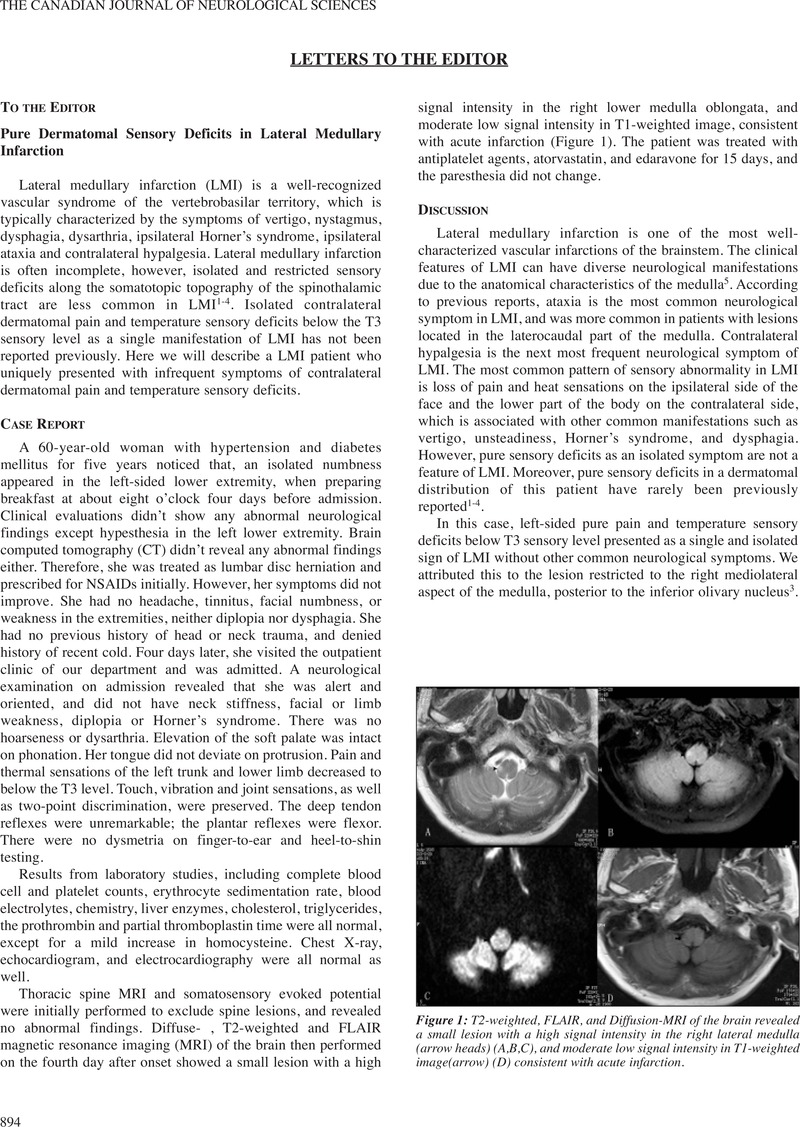Crossref Citations
This article has been cited by the following publications. This list is generated based on data provided by Crossref.
Hiraga, Akiyuki
and
Kuwabara, Satoshi
2022.
Isolated spinothalamic sensory impairment of the contralateral lower limb due to lateral medullary infarction.
Neurological Sciences,
Vol. 43,
Issue. 1,
p.
725.
Hiraga, Akiyuki
Kojima, Kazuho
Suzuki, Masahide
and
Kuwabara, Satoshi
2023.
Isolated contralateral spinothalamic sensory loss below thoracic level due to lateral medullary infarction.
Acta Neurologica Belgica,





